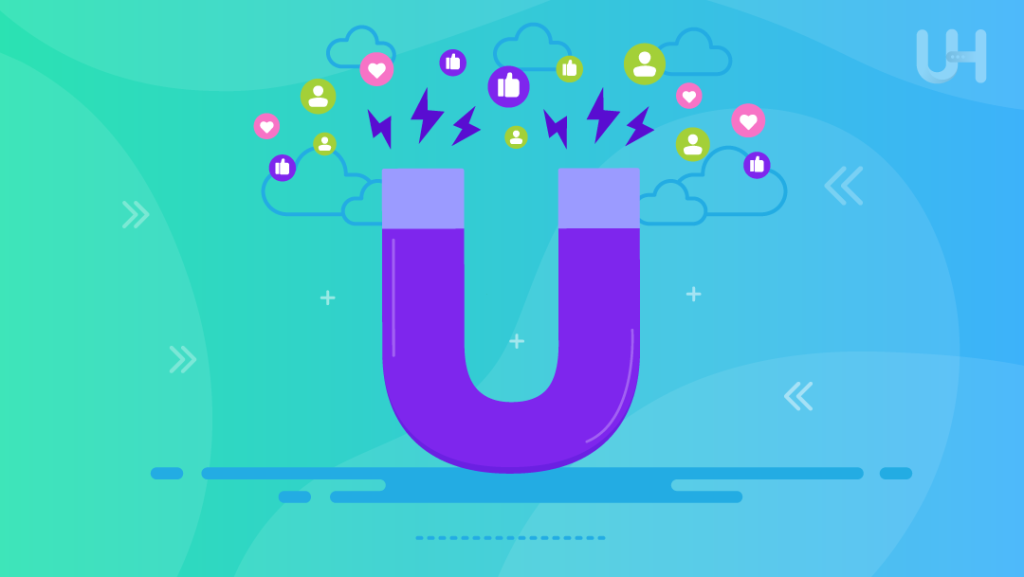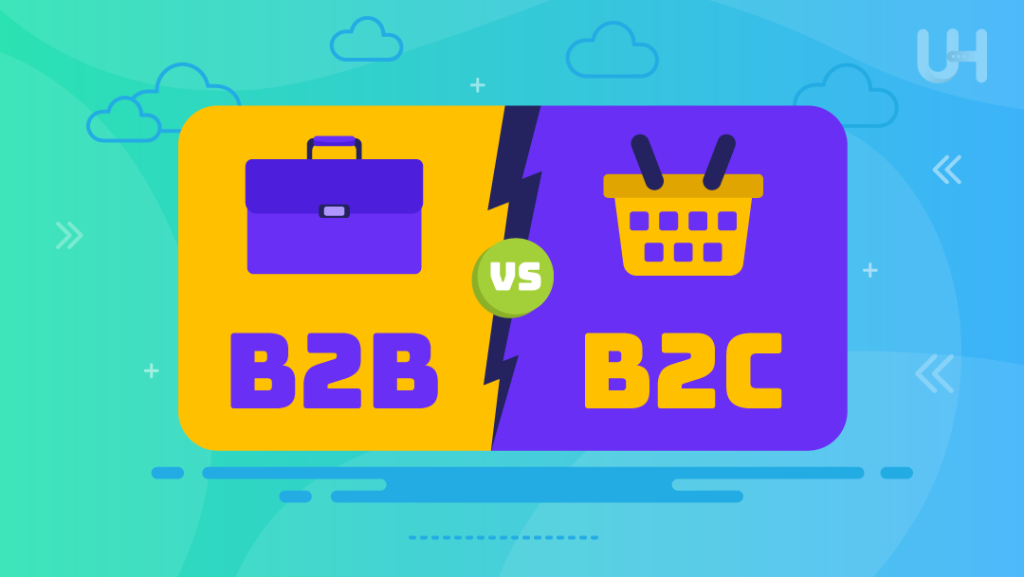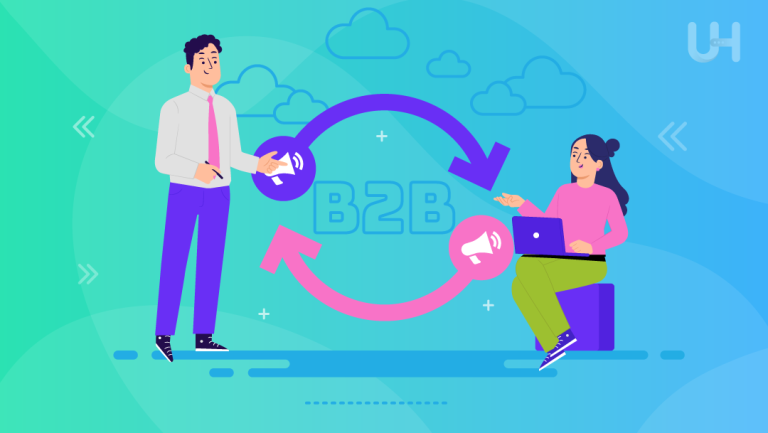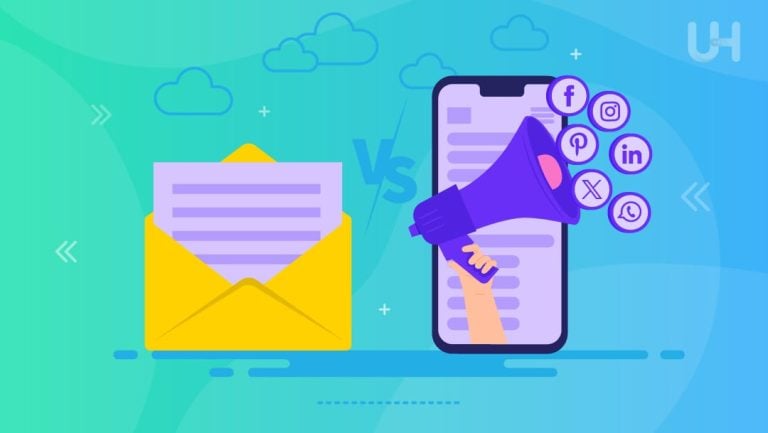Lead generation is the process of identifying and attracting potential customers for a business. It involves capturing the interest of individuals who may need your product or service, to convert them into paying customers. Businesses use various strategies, such as online marketing, email campaigns, and social media, to generate leads. Effective lead generation helps companies build a database of interested prospects.
Lead generation is crucial for business growth because it fuels the sales pipeline. By consistently attracting new leads, businesses can increase their chances of making sales and expanding their customer base. Both B2B (business-to-business) and B2C (business-to-consumer) industries rely on lead generation, though their methods may differ. In B2B, the focus is often on long-term relationships, while B2C typically emphasizes quicker transactions.
Different Types of Leads
Different types of leads help businesses identify where potential customers are in the buying journey.
Marketing Qualified Leads (MQLs)
Marketing Qualified Leads, MQLs, are qualified to be bought, but not yet ready to buy. They engage mainly with marketing material such as blogs, eBooks, newsletters, or social media. MQL will most probably submit a form download some guides sign up for their newsletter, and participate in a webinar. This demonstrates an interest either in the business or its offerings but does not directly demonstrate an intent to make a purchase. MQLs are usually at some stage early on in the buyer’s journey, and marketing will feed them qualified, useful information. Eventually, these leads might be a sales opportunity as such awareness and trust in the brand is built up.
MQLs aim to keep them interested in relevant content and learn about them. With good and ample information, businesses advance the MQLs by one step in the sales funnel stage. Nurturing through e-mail campaigns and content becomes important till then.
Sales Qualified Leads (SQLs)
Sales Qualified Leads are leads qualified and ready to be approached by the sales team. These leads would have come out of the interest stage and are showing clear signs of intent to buy. SQLs may request further product details, ask for a demo, or even contact a salesperson directly. At this point, they understand well what their problem is and are serious about agreeing to the solution offered by the company. SQLs are usually considered “high-value” leads because they are much closer to a decision and purchasing the product or service. SQLs are passed on from the marketing team to the sales team that is focused on closing the deal.
Product Qualified Leads (PQLs)
PQLs are leads that interact directly with a business’s product to express a buy-in interest in purchasing the said product. Some examples of leads include free trial signups, freemium versions of a product, and a product demo request. PQLs typically have a better understanding of the product up for sale because they have been able to feel the product. Their conduct demonstrates that they perceive value in the product and are seriously contemplating using it to fulfill their needs.
Mature companies usually concentrate their marketing efforts on PQLs as they are closer to making a buy than MQLs or even SQLs. PQLs have already proven their active interest by being engaged with a product, and hence require less convincing to convert. In this respect, businesses look to eliminate the remaining barrier to purchase by offering an incentive for the customer, such as a special discount or additional support with the product. It is in this that the businesses will find a way to address their PQL’s specific concerns and offer an incentive to successfully convert them into paying customers.
Get The Hosting For Social Networking Sites
Are you searching for a reliable social networking website? Wait no further, as UltaHost has a secure, fast, and scalable platform in store for you. From easily managing your socials to providing 24/7 customer service, UltaHost has it all.
Types of Lead Generation
Types of lead generation can be divided into inbound and outbound methods. Each approach uses different tactics to attract and convert potential customers. Two primary strategies usually govern this area: inbound vs outbound marketing.
Inbound Lead Generation
Inbound lead generation drives organic leads using valuable content. Instead of going out to grab people, businesses try to attract them. Companies get it done using content marketing, search engine optimization, or social media. It may be a blog or video that answers questions, a guide that solves a problem, or any such content that would be appreciated by customers. Such resources improve their rankings with search engines, making it easier for probable leads to boost inbound marketing.
The notion of inbound lead generation is just to involve the audience to the extent that you get them to trust you and convince them to look for more details or make a purchase. Inbound methods are less intrusive because leads discover the business on their own. Such approaches usually yield higher-quality leads because people only look for information that they need. Therefore, by simply focusing on giving value through content, businesses attract leads organically, and outbound lead generation turns out to be a highly effective long-term approach. For example, if you have a real estate business, one effective way to attract potential leads is by choosing an attractive WordPress theme for a real estate business.
Outbound Lead Generation
Outbound lead generation is proactive in the sense that it directly approaches the potential leads. Businesses employ methods such as cold emailing, direct marketing, cold calling, and paid advertisements to market their products or services. Implementing an effective cold call strategy can help businesses maximize their outbound lead generation efforts and improve conversion rates. They focus on the individual or organization that has not shown interest yet but could align with the model of the ideal customer profile that the business is interested in acquiring. As an example, a company can email a list of prospects or call businesses for their services.
The Lead Generation Process

The lead generation process involves four key steps: attracting visitors, converting them into leads, qualifying leads for sales readiness, and nurturing them through follow-ups. Each step is crucial for guiding potential customers toward making a purchase.
Step 1: Attracting Visitors
The lead generation process begins by attracting visitors to a business’s website or landing page. There are several strategies that businesses can come up with that make visitors drive traffic to their websites through content marketing and paid advertisements. The valuable and relevant content that businesses come up with includes writing blog posts, making videos, or even infographics that answer the questions of potential customers or address their needs. This content enhances the search rankings of a business, thus enabling the easy location of visitors. Besides that, businesses also employ paid marketing campaigns and social media strategies to expand their audiences. By focused investments in advertisements, companies can reach targeted demographics that have a higher chance of being interested in the products or services offered.
Step 2: Converting Visitors into Leads
Once visitors arrive on the website, these companies aim to convert those visitors into leads. Businesses do this by using forms and calls-to-action, or CTAs, throughout their content. Perhaps most prominently, for example, they might give visitors access to a free eBook or webinar in exchange for contact information. Simple forms collect some of the obvious details: names and email addresses, for instance-but businesses can then go follow up with that contact information later. An effective CTA would push visitors into taking some action on the website, be it subscribing to their newsletter or downloading a resource. The concept is that it should make it easy and appealing for visitors to share their information, thereby converting casual browsers into leads.
Step 3: Qualifying Leads
When the contact details of leads are received, businesses should qualify leads to know whether they can convert or not. The leads can be rated against specific criteria such as how engaged with the product they are, how they have shown interest in the product and demographic information. Businesses can utilize a scoring system to rank the leads based on their actions like downloading resource files or attending webinars. Leads with high scores are most likely going to convert into customers, so priority is given to the sales team. Knowing which leads are sales-ready enables businesses to target efforts toward the most promising prospects.
Step 4: Nurturing Leads
Lead nurturing is the final act in the lead generation process. It’s through lead nurturing that you develop a relationship with a lead, nudging it toward conversion. Companies keep leads engaged by sending follow-up emails with relevant content and personal offers based on interest. For example, a lead who downloaded an eBook might receive an additional resource or product recommendation. This way, constant communication keeps the business at the top and instills trust over time. This is because tailoring their approach to meet specific needs increases the possibility of converting such leads into loyal customers. Beyond simply converting leads, effective lead nurturing will show enterprises exactly where they need to fine-tune their online sales strategy to potentially smooth the way for future new leads.
Understanding B2B Lead Generation
B2B lead generation targets business clients instead of selling products to consumers. The approach would therefore target the businesses that will need what they have in store. Their aim is hence to garner a relationship with decision-makers in such businesses, for example, CEOs, managers, or department heads. B2B lead generation often necessitates personal outreach and content driven by value as a way to address specific business needs and challenges.
B2B vs B2C lead generation

Lead generation B2B is unlike B2C lead generation. Whereby B2B lead generation most of the time requires a longer time to close; this is because several people are involved in the process. The same case is not true about leads in B2C who can make decisions much faster and solo. Their value consequently, B2B deals tend to be more valuable in comparison because they result in long-term solutions or services, as compared to B2C deals, most of which are smaller in value and, hence bought more frequently. The latter is also famous for a deeper level of personalization and relationship building, but B2C focuses on much more emotional appeal and faster conversions.
Effective B2B Strategies
Some strategies are particularly effective in lead generation for B2B. Companies can reach out to professionals and decision-makers in the target fields directly through LinkedIn outreach. Another powerful tool is the method of hosting webinars, providing value that attracts possible customers and demonstrates expertise. Networking events, online and offline, offer potential business clients opportunities for networking. Other techniques include account based marketing (ABM) and personalized email campaigns also tailor the lead generation approach to the needs of each client.
Digital Tools for Lead Generation
Digital tools streamline lead generation by managing, tracking, and nurturing leads. Key tools include a dedicated hosting service, marketing automation platforms, and analytics software.
CRM systems
CRM systems such as Salesforce and HubSpot can help a lot in lead generation management. They help businesses in a structured way of storing and organizing customer data, tracking interaction/communications, and guiding the leads throughout the sales process. The information is centralized, therefore easily retrievable by marketing and sales teams to follow up and cultivate lead details. Businesses can segment leads according to different criteria for a more personalized approach. With the perfect ERP and CRM in position, your business can handle the data load without any delay in operations.
Marketing Automation Tools
Marketing automation tools make lead nurturing easier through the automation of repetitive tasks. Tools like Linked Helper and Linked Helper alternatives help businesses streamline LinkedIn outreach, automate connection requests, and send personalized messages at scale. Mailchimp and Marketo can send follow-up emails, schedule social media posts, and track interactions that lead have with content. Leads are assured well-timed and relevant messages. This ultimately leads to proper business engagement due to the application of automation, which will drive leads through the set sales funnel with accurate content based on their actions and preferences.
Analytics and Tracking
Analytics tools prove to be vital in tracking and adjusting lead generation behavior. Google Analytics and HubSpot trace what leads do on a company’s website, to its content, and its emails. This lets businesses know what’s working and what’s not intending to make appropriate changes in the approach. With analysis of such metrics as conversion rates, page views, and click-through rates, companies can trace aspects that yield successful strategies and optimize lead-generation efforts for better performance.
Lead Generation Channels
Lead generation channels include organic search (SEO), content marketing, social media marketing, paid advertising, and email marketing. Each channel offers unique ways to attract, engage, and convert potential leads.
Organic Search (SEO)
Search engine optimization can attract leads by improving the visibility of any website at search engines like Google. When businesses optimize their content using relevant keywords, they appear higher in search results. This makes it easier for possible leads to discover them when searching for solutions or information. Hence, SEO is centered on driving organic traffic by targeting those users who are actively searching for products or services and not spammers, hence giving them higher-quality leads. Simultaneously, lead nurturing, through offering valuable educational content, helps develop and build a brand’s reputation and increase awareness by demonstrating an understanding of customer concerns and providing workable solutions.
Content Marketing
Content marketing can be understood as a form of creating and distributing valuable, relevant, and consistent content to attract and retain a clearly defined audience. This content is included in the form of blog posts, videos, infographics, and eBooks. In this case, by fulfilling the needs and pain points of the target audience, businesses will gain trust and, consequently, in the industry. The leads interacting with this content will become more prepared and will likely advance along the sales funnel. Content can be shared via social media or email and cross-promoted with calls to action that solicit newsletter sign-ups or additional inquiries.
LinkedIn, Facebook, and Twitter are also very good leads if you get the lead generation right. Tools like ScrapIn can help automate and enhance this process. Businesses can go directly to a target audience by sharing appropriate content, discussions, and promotions through social media. LinkedIn is good for generating B2B leads; Facebook and Instagram are useful B2C leads. Companies can reach a wider number of people, maintain relationships, and cultivate leads with continued engagement on social media.
Paid Advertising
Google Ads and PPC ads push paid advertisements to a particular audience, generating leads quickly using keyword advertisements. Paid social media campaigns reach up to Facebook, Instagram, and LinkedIn, targeting users based on specific areas of interest, location, or demographics. This strategy makes sure that any advertisement reaches only the intended target and more traffic lands into capture leads landing pages.
E-mail Marketing
Email Marketing is another prime lead nurturing tool, where messages are sent in the form of mail with targeted goals. It can be aptly crafted content with product recommendations and special promotions related to the leads’ interests. Sending messages also depends greatly on segmentation through lead behavior and interest. Sending such messages can help make most leads take action. Follow-up on leads can be done constantly through emails, thus holding relationships and guiding such leads toward making a purchase decision.
The Role of Content in Lead Generation
Content plays a critical role in lead generation by engaging and educating potential customers. Effective content, such as blog posts, whitepapers, and webinars, builds trust and encourages leads to take action. You can use a free online quiz maker to create a survey that will better support your lead nurturing strategy.
Blog Posts and Articles
Blog posts and articles on any given topic are very good at attracting potential customers through educational content. The visitors will be engaged by the businesses when they create posts about industry trends, customer pain points, or common questions. This forms content that helps one develop trust and authority to encourage readers to learn more about the company’s offerings. Well-optimized blog posts also promote SEO, with natural traffic helping capture leads actively searching for solutions.
Whitepapers and eBooks
Samples of gated content that are likely to be used rather frequently as lead magnets include whitepapers and eBooks. Business often offers these rich resources for the visitor’s email address or another contact information in return. The strategy helps businesses deliver highly detailed, deep insights while gathering data on leads who are interested in more detailed answers. Such pieces of content are likely to appeal better to professionals who need detailed information before they buy something.
Case Studies and Testimonials
Case studies and testimonials are excellent trust-builders for a lead. They help the lead see how a company’s products or services can solve real-world problems for other customers. Case studies are very detailed examples of success, enabling the potential lead to understand the value they might gain by working with the company. Testimonials are social proof, which shows that other businesses or people have put their trust in it and valued its offerings, making the possibility of conversion much higher.
Webinars and Live Events
Webinars and live events are interactional formats through which qualified leads may be captured. Business success firms will be hosting a webinar on valuable industry topics of interest to engage directly with potential leads since an expert will give the presentations and contemporaneous discussions. People may register for webinars, which always seek contact information, making it an effective means of getting leads. Live events also present an opportunity to stage Q&A sessions and direct one-on-one interaction, which infuses authority in businesses and makes them efficiently connect with highly interested prospects.
Common Lead Generation Challenges
Common lead generation challenges include low conversion rates, poor lead quality, and lack of timely follow-ups. Addressing these issues helps improve lead engagement and overall success.
Low Conversion Rates
Low conversion rates occur from visitors who have not taken the expected action, such as filling out a form or registering for a newsletter. This usually happens because of unclear CTAs, complicated forms, or content that is not relevant to visitors. Improvement can be seen in the simplification of forms and the creation of compelling CTAs that match visitor needs. In addition, a landing page’s user experience can be made smoother to allow for greater conversion.
Poor Lead Quality
Lead quality issues arise when companies attract leads that are not likely to become customers. This happens mostly because of targeting that is not narrow enough or because the content is not relevant to the target audience. This can be corrected by setting exactly what ideal customer profiles are and targeting them using marketing strategies. Focusing on relevant, high-quality content will get leads interested in the product or service.
Lack of follow-up
Failure to follow up with the leads timely or personalized manner results in losing many leads. There is a high likelihood that the leads lose interest or choose some other competitor if businesses do not follow up in time. Hence, companies need to have an organized follow-up process. Automated social media, emails, personalized messages, and timely reminders will keep the lead engaged and move it to a purchase decision. A well-timed, strategic call to that inbound lead has almost incalculable power compared to the ability to make high numbers of cold calls or cold emails.
Best Practices for Effective Lead Generation
Best practices for effective lead generation include optimizing website design, creating targeted content, and engaging on multiple platforms. Consistent follow-ups are also essential for nurturing and converting leads.
Optimize Website Design
What makes an effective website user-friendly and navigable? It is only possible with a clean layout having quick load time on the business’s website. The CTAs also need to be given prominence to nudge the visitors to make a move, such as requesting the form or simply subscribing for a demo. A clean and well-designed website offers an easy experience to users, nudging them to convert into leads.
Create Targeted Content
Only the right audience can be attracted when the content is rightly tailored to buyer personas. Businesses need to create content such as a blog post and videos that specifically speak to the pain points and challenges of the target customers. It could be whitepapers addressing distinct pain points and goals by different segments. Once businesses provide relevant and valuable information, then they can reach those potential leads much more effectively in these conversions.
Engage on Multiple Platforms
It allows businesses to reach a massive audience by using various platforms, such as SEO, social media, and paid ads. Optimizing your content for search can drive organic traffic into the company while creating an account on Facebook and LinkedIn is great for reaching people directly through social media. Paid advertising through PPC campaigns is one of the targeted outreaches to potential leads. A diversified approach ensures that businesses attract leads from all possible sources and increase the overall lead volume they get. With the use of chatbots, you can get significant help in assisting your shortlisted leads.
Follow-Up Strategies
Follow-ups play a great role in nurturing leads and pushing them through the sales pipeline. Thus, businesses should embrace follow-up tactics, such as automatic emails, personalized messages, and reminders at the right times. Eventually, with constant contact and beautiful content, a company builds trust and keeps the lead warm until he makes a purchase. Then, all chances of losing the potential lead to competitors are evaded.
Effective Lead Nurturing With The Best Email Hosting!
Make the most of your leads by utilizing UltaHost’s email hosting services for businesses of all sizes. Host your business email on a secure, privacy-guaranteed server, and promote your site with every message you send!
Measuring Success in Lead Generation
Measuring success in lead generation involves tracking key metrics like conversion rates, lead acquisition costs, and customer lifetime value. Using tracking tools and assessing ROI helps optimize strategies for better performance.
Key Metrics to Track
Numerous businesses also track key metrics when evaluating lead generation effectiveness. Conversion rates represent the percentage of visitors who are converted into leads or customers, which makes it more important for businesses to understand the effectiveness of the strategies they are using. It also discusses lead acquisition cost as a measure of how much it will cost a business to acquire a new lead and informs about marketing efforts’ efficiency. This would include a calculation that estimates the total revenues a business could potentially get from a customer over time, thereby estimating the long-term value of leads.
Tools for Tracking
Various tools also provide a method to monitor the performance of the lead generation strategies. It can be followed by Google Analytics, which is used to monitor website traffic and lead behavior. CRM systems, such as HubSpot and Salesforce, track interactions and manage lead data. Marketing automation platforms like Marketo and Mailchimp show campaign performance for businesses. Businesses then can tweak their approaches to suit real-time data. Once they opt in, they’ll become a potential lead source.
ROI in Lead Generation
As such, lead generation ROI assessment informs whether or not the business’s efforts are fruitful. ROI can be estimated by using revenues generated from leads and the expense of gaining the leads to incorporate advertising, tool, and personnel costs. A positive ROI means the lead generation strategy is profitable, but if it is low or negative, then there must be room for improvement. Measuring ROI thus enables businesses to adjust their strategies toward maximal profit and efficiency.
Conclusion
Lead generation is essential for business success because it brings in potential customers and drives growth. By attracting and nurturing leads, businesses can convert prospects into loyal customers. Whether through organic methods like SEO or paid strategies like PPC, lead generation ensures a steady flow of opportunities that fuel long-term revenue.
To succeed, businesses should implement a well-rounded lead generation strategy using both inbound and outbound methods. Combining these approaches helps attract high-quality leads and engage them at different stages of their buying journey. By applying effective strategies and tracking performance, businesses can optimize their efforts and achieve sustained growth.
Get the best CRM hosting from UltaHost. The right CRM platform can ensure that your lead nurturing process is trouble-free in the later stages of the sales funnel. We have the best CRM tools for you!
FAQ
What is lead generation?
Lead generation is the process of attracting and converting potential customers into leads who show interest in your products or services.
Why is lead generation important for businesses?
It helps businesses grow by continuously bringing in new prospects and turning them into loyal customers, driving long-term revenue.
What are the different types of lead generation?
Lead generation can be inbound, using organic methods like SEO, or outbound, relying on direct outreach like cold emailing and paid ads.
What is B2B lead generation?
B2B lead generation focuses on attracting other businesses as clients by targeting decision-makers and building relationships through personalized outreach.
How do CRM systems support lead generation?
CRM systems help track and manage leads, storing key information that allows teams to follow up and nurture potential customers.
What role does content play in lead generation?
Content, such as blogs and webinars, educates and engages potential leads, building trust and guiding them toward conversion.
How do you measure success in lead generation?
You measure lead generation success by tracking metrics like conversion rates, lead acquisition costs, and return on investment (ROI).











